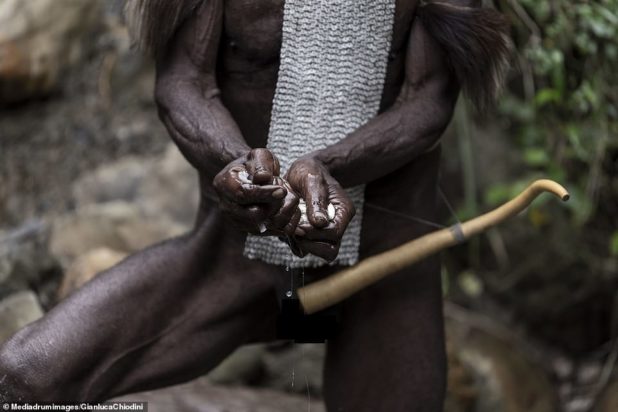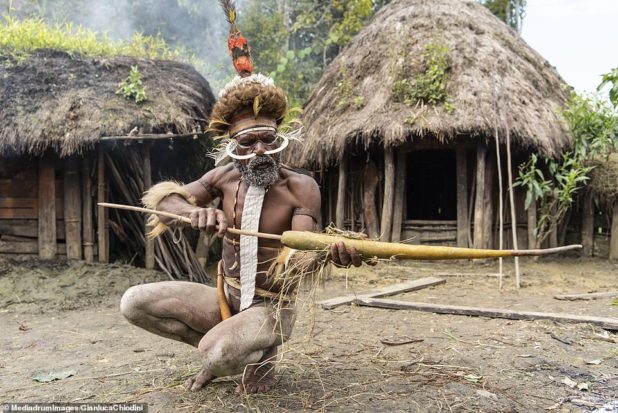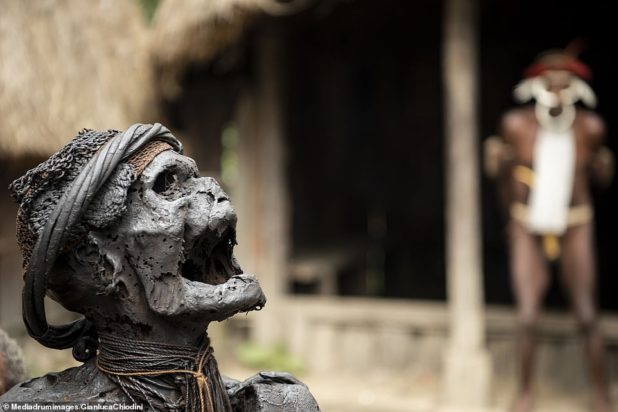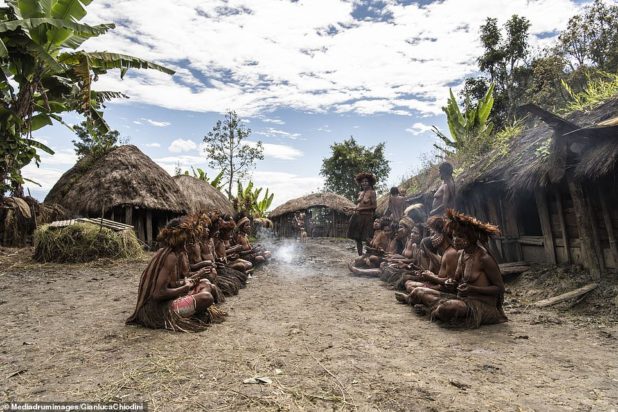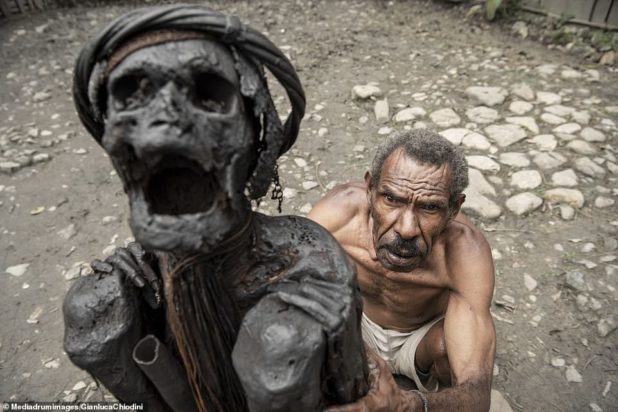Pomidor Quixote
Daily Stormer
December 10, 2019
Imagine referring to that thing as “a human being.”
“Pope” Francis said that we have to learn from the age-old wisdom of indigenous tribes in order to save the planet, so here’s another indigenous tribe to learn from.
After all, what better source of wisdom than basic lifeforms stuck in a loop of doom?
This is the former cannibal mountain tribe who amputate the fingers of women to appease the dead and smoke ancestors daily to preserve their mummified bodies.
The indigenous Dani tribe live in the isolated Baliem Valley in West Papua, Indonesia, and were discovered by a Western scientist 80 years ago.
Huntsman are pictured wearing a Koteka, commonly referred to as a penis sheath, and the women’s bodies are flecked with white paint.
Macabre traditions dating back 250 years include greasing mummified bodies with pork fat and using a stone axe to remove the fingertips of a tribeswoman every time she loses a close relative.
The ritual is meant to emphasise the pain of the woman’s loss and to appease the dead relative.
Similarly grotesquely, the tribe has been heavily linked with cannibalism in the past, although neither gruesome tradition has taken place in the tribe since the 1990s.
The images were captured by Italian travel photographer, Gianluca Chiodini, 41, who spent days finding the isolated mountain tribe.
After using various means of transport to reach the secluded Dani people, Mr Chiodini was greeted with ‘kindness’ and was stunned when he saw the mummified remains of a 250-year-old chief.
‘The Dani are the most beautiful tribe in the region by far. The men wear penis sheaths (Koteka) and wild boar tusks as rings through the nose with colourful face paints – you’re left in no doubt you’re looking at warriors,’ explained Mr Chiodini.
‘I studied mummification before I arrived but knew it would only be luck that allowed me to actually see one of the preserved corpses.
‘The Dani are said to keep seven mummies in total but only two can be seen by foreigners.’
They are so beautiful that even their kids look evil.
People who don’t associate the word “beautiful” with this tribe have been brainwashed by the Western concept of beauty.
‘To preserve the body, it is greased every day with a balm made with pork fat and a fire is lit that burns for up to six hours. All this has been happening daily for 250 years.’
He continued: ‘The mummy is kept protected in a hut where access is strictly forbidden and only a select few are allowed to touch the dead.
‘The mummy I saw was a village chief and his name was Wimontok Mabel. He was a glorious warrior. He lived more than 250 years ago and had 25 wives. Peace to his soul.’
Doing weird oil massages to corpses every day is an age-old practice that helps them live in harmony with the environment.
We should learn from this and maybe even adopt their way of living, because unlike us, they don’t change the weather.
The Dani people were discovered by an American zoologist in 1938, which was the first time their existence was recorded by an outsider.
Zoologist Richard Archbold was on an expedition to New Guinea when he spotted the Dani people from a plane.
According to Mr Chiodini, there have been some major changes to the tribe in the past 80 years but some key traditions are still upheld.
…
‘Cannibalism has been left in the past though, and now they prefer to have pig festivals. Men kill a pig with a bow and arrow while women prepare an open air ‘steam oven’ using leaves. In the end everyone eats the pig.’
They previously did that to their own, but now they do it to a pig. That may look like Progress, but it’s actually a sign that they’ve been corrupted by outside influence and thus, more likely to change the climate due to meat being bad for the environment and stuff.
Mr Chiodini said he was pleased to capture the beauty of the Dani people and preserve the traditions in his work.
He added: ‘Despite their aggressive look and the isolation they live in, they are friendly. It can take a little while for them to trust outsiders which is why I decided to take some time and spend some days with them.
‘Slow photography’ is always a winning strategy and hopefully people can see that there is beauty everywhere.’
Yes, beauty is everywhere.
Just take a look at this:
Do you see the beauty? It’s in there… somewhere.
 Daily Stormer The Most Censored Publication in History
Daily Stormer The Most Censored Publication in History

